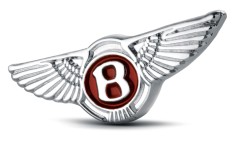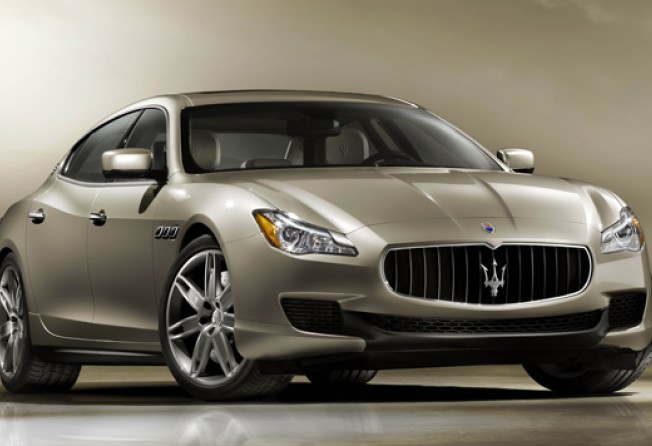
Life's little secrets
Vehicles can speak volumes about their owners

Wear the right labels, and your face might fit where it matters in Hong Kong. Yet, watch what you drive here, because your car can blurt little secrets about you.
Academics and admen have long debated why people buy certain cars, but such semantics are second-nature in status-conscious Hong Kong. Bonnet badges have traditionally conveyed messages about their owner's nature and lifestyle, but old stereotypes of who drives what are changing. As luxury marques, such as Aston Martin and Mercedes-Benz, expand their ranges into little cars or SUVs, so Hong Kong car watchers must look at a vehicle's personal touches to place their owners in the city's automotive hierarchy.

Such insignia traditionally reminded the Hong Kong Automobile Association's patrolmen that the motorist required immediate respect as a prescient, paid-up member. Grille badges then expanded to include membership of the respectable Classic Car Club, to profess the owner's love, knowledge, and in Hong Kong, money for old cars.
Car-club badges also show the owner is probably devoted to his often money-pit machine, can probably change a wheel, and probably enjoy a varied social life beyond work.
An MG Car Club badge advertises the hallmarks of selfless love: from forgiveness of every grate of their gleaming bangers' gearboxes, to paternal calm when they drop another pool of oil. Grille badges also appeal to school-prefect types who need to assert their social status. The Jockey Club and the Clochemerle-esque Legislative Council badges shout: "Do You Know Who I Am?", and tell other socially insecure Sunday brunchers that they are well connected. Such badges can entitle some grilles to idle outside Cartier alongside the hard-nosed Z-platers in curtained, glass-blackened Toyota Alphards, or double park at with the "CC"-badged consular crowd. Profession-related bumper badges flaunt drivers' intellect and success, and subtly promote expertise in club car parks, as if to say: "Come and see me if you want your divorce/ books/ or prostate done". Police insignia, on the other hand, tells junior constables: "I might know your boss."
Many car windscreens show stickers that betray their drivers' lifestyles, from the level of security at their homes and offices, to the clubs and clubhouse podiums they frequent, where they studied overseas, and the breadth of their social life. The stickers' positioning also reveals a driver's care for passengers, however. Haphazard or view-blocking arrangements suggest the driver has little concern for the front-seat passenger's view of the road, and is unlikely to consult wives and underlings. Stickers high on the windscreen show a healthy respect for safety and authority.
Cars' interiors blab volumes about their owners. Flamboyant vertical doors say look at me. A worn driver's seat suggests a loner; dog hairs show a capacity for love; while rusty brake disks and less than 8,000km on the clock per year suggest a Saturday or budget driver. A car's stereo's volume and channel settings, CD collections or iPod playlists show where the driver's at in time, mood and taste. Evidence of texting on the move suggests the driver is a "me, me, me" multitasking type with a short attention span and scant concern for road, or any safety. Nail scores between 11 and two o'clock behind the steering wheel reveal serial car abuse, by nervy driver, often in stationary traffic, while scuff to the doors and sills suggest an owner's haphazard care for his own possessions, let alone anyone else's. An under-used indicator switch shows the driver is a selfish, incommunicative individualist who is less likely to keep you in the loop.
Drivers with electronic key fobs project tech-savvy, but reveal an early adopter trust in specialist technology and expertise that they may not understand, while those with lots of keys suggests a busy life or trust issues, especially if the glove box is locked. Push-button ignitions denote a "Thunderbirds are go" nature, particularly if the switch is red and lights up as the engine purrs to life at the driver's slightest touch. Such drivers may also be tempted to whir the passenger's wing mirror, or windows, just to show who is in charge.
Some push-button Lexus types have developed a strong attachment to the electronic massage seat in the LS 460, raising questions over who or what might recharge their batteries.
The interiors of cars are also snapshots of Hong Kong life. A lavish interior shouts welcome to my world. Endearing collections of model cars and action figures suggest a vivid imagination and a sense of adventure, or a need for play time and space in possibly humdrum, mortgaged existence. Dashboard orgies of Hello Kitty and Dear Daniel suggest the driver has a yen for acquisition and softness, while "Baby on Board" stickers, and piles of cushions reveal another Little Emperor is on the move. Cars' dashboards can also illuminate the driver's nature. The head-up display of a BMW denotes a driver who prefers to keep his eyes on the road of life, while the asymmetrical dashboards in the Saab 9-5 suggests the driver is at the centre of his private jet-fighter-like world. BMW's iDrive electronics reveal the owner's patience in fathoming its menu settings, while Audi's simpler MMI reveals the owner has shopped around for a simpler twiddler, and Jaguar's touch screen alternative reveals a preference for a simpler, faster life.
Some cars mock their owners' high-life pretentions. Light swirl scratches indicate that it may have been washed on the cheap by a helper recycling road dust via a wet leather, while dings on the wings also hint that a vehicle that may be too big for its garage or budget. Service bills reveal the biggest wealth secrets: of whether the car is maintained on marque-approved electronic diagnostic and safety equipment, or by "a little man" on grimy, cut-priced jacks in North Point and To Kwa Wan.
Many Hong Kong cars mock their owners' social mobility. Supercars in tunnel-traffic gridlock show up the supposedly sane, successful people who let their testosterone rule their heads, and buy the wrong equipment for the wrong job, in the wrong city - except for brief revs in third gear to remote places on Sundays. Four or more empty seats in a seven seater reveal wasteful drivers with little sense of seat occupancy and cost-per-mile basics.
Luxury SUVs reveal trendy drivers with a love of high horsepower and a penthouse view of the road.
They also reveal people who pay lots of extra money to negotiate the ravines on the way to Wellcome, only to find their vehicle's bulk is harder to park. Electronic reversing beepers often highlight cars that are too big for their owners. There might be one in your block.